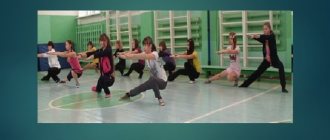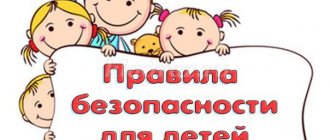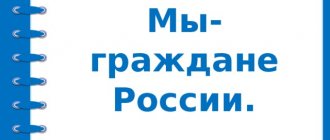You can't stop sewing beautifully!
Modeling, Cutting secrets
When studying sewing and cutting, sooner or later, a beginner will have questions -
what is modeling, why is it needed and how can it be applied in sewing?
“...Modeling refers to the field of applied art that deals with the creation of models or samples of clothing...”
It is modeling that allows you to significantly expand the boundaries of sewing!
In a global sense, modeling is the study and construction of models of various objects and phenomena.
And clothing modeling...
This is the creation of sketches of garments, taking into account the characteristics of the materials used, the purpose of the product and the human figure.
To put it simply , you need to study the figure and create a suitable model.
The modeling process answers the questions:
For whom? For what? From what?
This means, if you want to independently create a model that you like, you need:
- know the features of the figure;
- have an idea where and with what it can be worn;
- and also what materials are suitable for the selected model.
Having decided on the answers to these questions, you can begin the practical part of the modeling.
The process of creating a model is divided into two main stages:
- Working on composition, creating a sketch/drawing;
- Performing composition in the material,
In turn, the second stage of creating a model is:
- Development of drawings and patterns;
- Open;
- Sewing.
At the first stage, you can trust the work of a professional designer, using an already created sketch or a model from a picture (although, knowing modeling techniques, you will probably want to come up with models yourself - this is a proven fact!)...
The second stage requires not only knowledge of the types and methods of modeling, but also their competent application.
There are two types of modeling:
- Creative;
- Technical.
Creative modeling is based on developing models/collections from scratch. Most often, collections are developed based on one theme. For example, historical materials, folk art, architecture, and fashion of different eras are used.
Excellent examples of creative modeling can be seen in the collections of famous designers.
Valentin Yudashkin. Collection dedicated to St. Petersburg
Karl Lagerfeld - Chanel clothing , which the designer dedicated to the legendary Coco.
In creative modeling, do not use drawings from fashion magazines or other sources.
The process of creative modeling is determined by the general intention of the fashion designer/designer when developing models, taking into account the trends of modern fashion, the desire of lovers to dress beautifully and the geographical location.
That is, by coming up with the image of a future model “from your head,” and not copying it from a picture you like, you are engaged in creative modeling!
But technical modeling is the transfer of a model from a drawing or photo from a fashion magazine to a drawing, using different modeling methods and laws.
In other words, technical modeling is the embodiment of an idea/thought/image “in life”, i.e. direct creation of the model.
The most well-known and popular are three methods of technical modeling:
- Dummy;
- Graphic;
- Template.
The fake method is to obtain a model using tattoos.
Creating a model of clothing and obtaining scans of its parts, in accordance with the artistic design, is carried out by prototyping (duplicating) the product on a human figure or on a mannequin.
Mainly used to clarify the shape of parts (for example, collar, cuff, etc.) and for complex cuts of clothing.
Techniques of the moulage method are used when carrying out fittings in the process of making clothes.
This method dates back to ancient times and still remains relevant. Designers especially love it.
The graphical method of technical modeling is based on geometric orthogonal transformations: translation, symmetry and rotation.
Models are developed using preliminary calculations, that is, by direct design. The proportions of the drawing/sketch and the measurements taken from the figure are immediately taken into account.
With the graphical modeling method, a movable section of a part is built, completely maintaining its dimensions.
There are two ways to construct equal geometric figures: the serif method and the perpendicular method.
For a beginner in sewing and designing, the graphic method of modeling may seem difficult.
But, if you have a mathematical mind and love to make drawings, you will like it.
The template method of technical modeling is the most common and simple.
With the template method of modeling, a model is created on the basis of a standard design, by cutting the patterns and moving it away from the center line.
The template method allows you to quickly perform several transfers and rotations of the same section of the drawing, cut into parts, which is necessary when creating folds, folds, and draperies.
The essence of the method is that:
- A template is cut out of paper, an exact copy of the main part of the base base;
- In accordance with the model, the new position of the element is applied to the template;
- The template is cut along the line of the new position;
- The element's original lines are covered/moved;
- In this case, the new position of the element is determined;
- The contour of the transformed template is outlined, laid on thick paper, obtaining a new pattern.
The template method is simpler than the graphical one, gives good results and is therefore widely used in technical modeling.
When performing modeling in a template way, you should remember the aesthetics and smoothness of the new design lines being drawn up.
Also, there are a number of important mandatory conditions that must be observed when using the template method.
This topic cannot be covered within the framework of one introductory publication.
⇒But, once you start learning the basics of modeling, and most importantly, having learned to correctly apply its techniques, you will definitely find this activity fascinating!⇐
After all, using a proven foundation and modeling skills, you can create new things every day.
By the way, the site has several articles and videos about the use of some modeling techniques:
Modeling and sewing a dress - sundress from coupon fabric
Bolero with raglan sleeves. Modeling, sewing.
Modeling a skirt with reliefs. Skirt sewing technology.
Children's sundress. Modeling.
Learn and use modeling to expand your sewing capabilities, it's really, really fun and exciting.
Once you have created YOUR own model, you will definitely want to repeat the result!
With faith in your success and wishes of good luck, Elena Krasovskaya
This is interesting:
- How to sew a cover for a sofa or swing
- Fashionable spring coats 2020. Trends.…
- How to sew from velvet. Processing features…
- 18 ways to process the bottom of a product and...
- How to sew eco-leather and leatherette. Difficulties…
- How to become happy? There is a proven recipe
Lesson topic: “Modeling an apron.” 5th grade
Lesson topic:
“Modeling an apron” .
5th grade ,
technology teacher, highest category,
MAOU Gymnasium of Nytva
Lesson objectives: 1. Educational:
· Introduce the modeling process.
· Contribute to the formation and development of modeling skills, using an apron with a bib to create various models of aprons and select the finish of the product.
· Promote memorization of basic terminology of technological processes.
· Consider 2 types of modeling: artistic and technical.
· Contribute to the development of basic design skills.
2. Developmental:
· Promote the development of active attention, observation, logical thinking, creative imagination, independence.
· Create conditions for the development of logical thinking in students, the formation of its originality.
· Create conditions for the dynamics of creative growth.
3. Educational:
· Contribute to the development of aesthetic qualities in students, accuracy in work, respect for folk traditions, and the ability to work in a team.
Teaching methods:
verbal (conversation, story), work in pairs, visual (presentation, demonstration of models), reproductive, partially search, practical work.
Control methods:
oral, practical, self-control
Lesson type:
combined
Object of labor:
modeling of an apron according to the presented sketches, based on geometric shapes: square, rectangle, oval, curved line.
Lesson equipment:
Electronic presentation.
Interactive board. Handouts (samples of fabric, trim, etc.).
Glue, scissors, colored paper, rulers, pencils.
Workbook, stencils of apron parts made of colored paper.
During the classes
| Lesson steps | Lesson content | Slides |
| I. _ Organizational moment (1-2 min) | Hello girls! checking students' readiness for the lesson; students' mood for work; communicating the lesson plan to students. In the last lesson we built a drawing of an apron. Today we will continue talking about the wonderful world of aprons. The topic of our lesson: “Modeling an apron.” This topic is a continuation of previous lessons in the “Textile Processing Technology” module. Today you will all be fashion designers. | |
| Goal setting | The purpose of the lesson – learn to model, create new models of aprons. We will get acquainted with such professions as artist-fashion designer, fashion designer, seamstress. During practical work, we will make a mock-up of an apron from colored paper. We learn a lot of new and interesting things. | |
| II . Repetition of covered material. (3 min) | First, let's repeat the previous material. In the last lesson, we built a drawing of the apron and determined the main lines of the drawing. Task: Look at the screen, in front of you is a drawing of an apron and the lines of the drawing of an apron are listed, you need to match the names with the lines. | |
| III. Learning new material (7 -10 min) | Fine! You have learned the material from the last lesson. Clothing design is closely related to modeling. Changing the shape of clothing parts and their artistic design are carried out through modeling. The parts of the product must be compatible in shape. The production and modeling of clothing is carried out by specialists of several professions, such as: Fashion designer - designer - makes drawings and patterns . An artist—fashion designer—models clothes. To perform such work, knowledge of the human figure, its proportions and plasticity is required. You need to understand the technology of sewing, as well as the laws of suit construction, cutting lines and finishing. Seamstress - performs sewing operations. So, today you will play the role of a fashion designer, and learn how to model an apron, the drawing of which we built in the last lesson. First, let's get acquainted with the concept of “modeling”. What is it? Modeling is the process of changing a pattern drawing in accordance with the selected model. This is a creative process of creating clothes that are new in style and decoration. There are several types of modeling. (workbook p. 29, definition) (see appendix - RT 1 page) Artistic modeling is the creation of collections of models, taking into account fashion and clothing style, it is carried out by artists - fashion designers. Technical modeling is the creation of drawings and patterns based on sketches and drawings; it is carried out by fashion designers. The work of any fashion designer begins with the formula: “for whom - for what - from what” | |
| Question: Look at the screen and say: How do the presented apron models differ from each other? (Answer: the shape of the bottom of the apron, pockets, bib, selected material, trim) Apron - designed to protect clothing, hence the shape and material of the apron will depend on the type of work being performed. For a welder and a factory worker, the apron must be durable and more closed in shape; such aprons are sewn from leather or canvas. | ||
| When coming up with a product model, it is necessary to take into account the purpose of the product, the properties of the material from which this product will be made, know the basics of composition, and fashion trends. An apron made from two rectangles will most likely look rustic and not elegant. It is advisable to make changes. | ||
| When thinking about the style, it is necessary to determine the finishing of the product. The following types of finishes can be used: embroidery, applique, trim with braid, lace, bow. (Types of finishes are presented on the cards that are on your desks) (see appendix – finishing 1, finishing 2) | ||
| When performing technical modeling of an apron, you can change the shape and size of the lower part of the apron, bib, add straps, a belt, and draw pockets of various shapes. The apron can also be one-piece or cut along the waist lines. All these features of the model must be reflected in the drawing. Let's take a closer look at how you can change the details of the apron. | ||
| We can do the same with the bib. When changing the lines of the apron, it must be remembered that the shape of the parts should not be different: if the lower part has a semicircular, triangular, or rectangular shape, then the pockets or bib should have the same shape. | ||
| To consolidate, let's do the exercise in the workbook p. 31, No. 14. (see appendix - RT 2 pages) | ||
| IV. Practical work. (10-15 min) | Before you start doing practical work. Let us repeat the safety rules when working with scissors. | |
| Stage 1: Sign your sheet to complete the practical work. (see appendix – model 1, model 2, model 3, model 4, model 5) § Look at the sketch of the apron model located on the sheet in the upper left corner. § Compare how the apron parts in the sketch differ from the set of apron parts presented in the package. Select the details that match your sketch. (see appendix - details) Glue the apron parts onto a sheet of paper. | ||
| Modeling rules: · If the apron is made from variegated fabric, the trim should be made in one color, and it should match one of the colors of the fabric. · The brighter and larger the pattern of the main fabric, the less finishing there should be. · Fabrics of bright colors are best combined with less bright colors, white, black or gray. · Pale, colorless fabrics can be brightened up with bright finishes. | ||
| Stage 2: § Select a suitable fabric sample for your apron model and glue it to the space provided on the sheet. When choosing fabric, remember the modeling rules. § Select the appropriate finish for your apron model (samples are provided on the cards). (see appendix – finishing 1, finishing 2) | ||
| Additional task: Anagrams 1. Persnatok, tsininozh, nolokvo, okstezh, lyshekok. (Thimble, scissors, fiber, stitch, peg). 2. Revenge, boatacht, rptichat, antsoricht, aztsoricht, tschat. (Basting, hemming, stitching, topstitching, topstitching, stitching). 3. Oksnrtiuoravine, omediloravine, boroduvonaei, nitsuremtny. (Design, modeling, equipment, tools). 4. Opkdalkda, omazkia, aftkrua, akeldysookp, lfzileni. (Lining, mosaic, texture, kaleidoscope, non-woven fabric). | ||
| V. Summing up the lesson (2 -3 min) | — What new things did you learn, what concepts did you get acquainted with, what did you learn? (frontal) — Give marks for practical work. | |
| VI. Homework (1 min) | "Dress Mashenka" ( come up with your own apron model, draw and color it). Solve the anagrams. (The letters in the terms are mixed up) Anagrams 1. Persnatok, tsininozh, nolokvo, okstezh, lyshekok. (Thimble, scissors, fiber, stitch, peg). 2. Revenge, boatacht, rptichat, antsoricht, aztsoricht, tschat. (Basting, hemming, stitching, topstitching, topstitching, stitching). 3. Oksnrtiuoravine, omediloravine, boroduvonaei, nitsuremtny. (Design, modeling, equipment, tools). 4. Opkdalkda, omazkia, aftkrua, akeldysookp, lfzileni. (Lining, mosaic, texture, kaleidoscope, non-woven fabric). (see appendix - homework) |
Literature:
1. Mezhueva. 5th grade. Option for girls: At 2 o'clock - Saratov: Lyceum, 2010.
2. Simonenko. Textbook for 5th grade students (option for girls). Moscow: Publishing house: “Ventana – Graf”, 2004.




